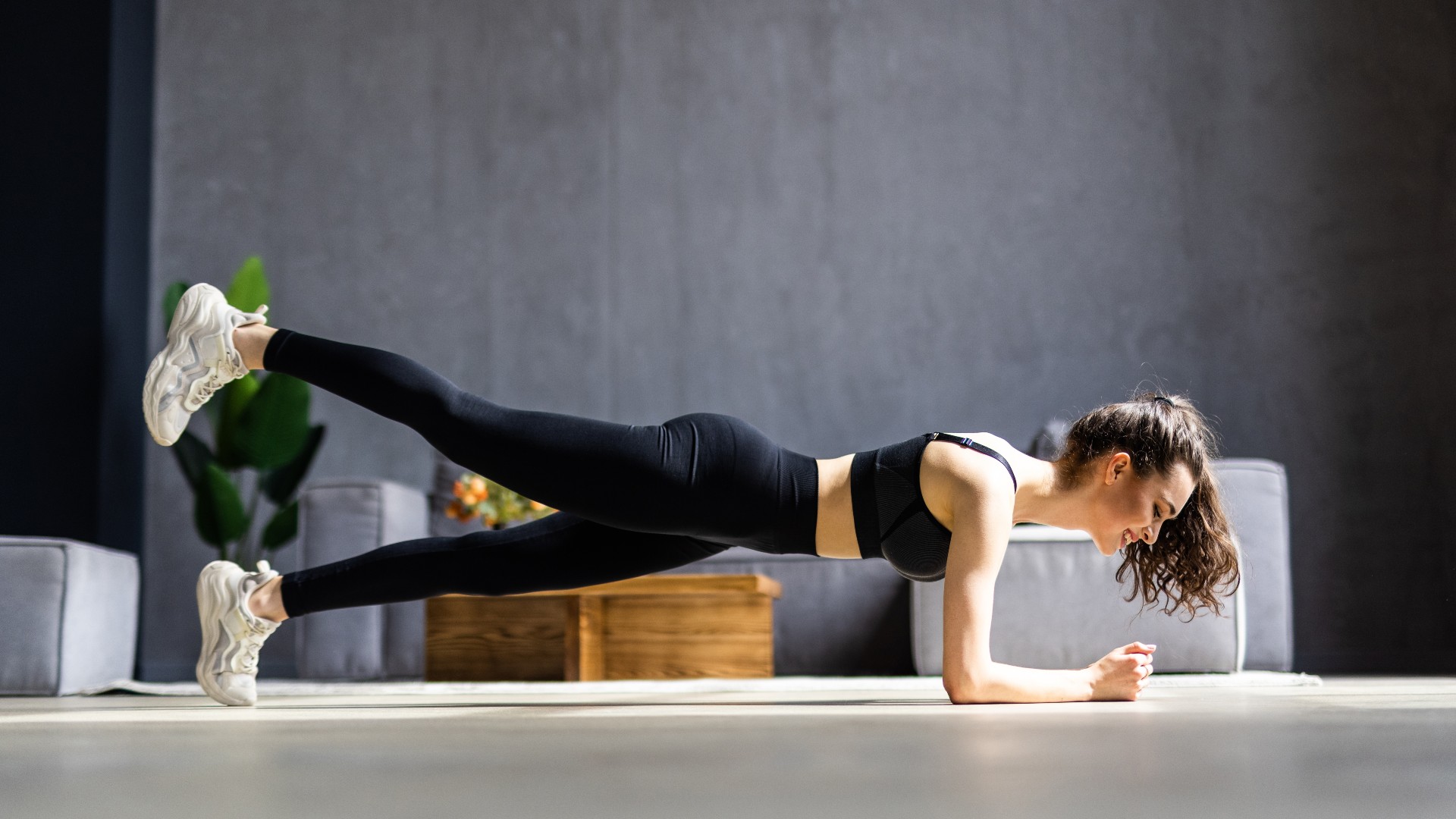
The alligator drag, or alligator crawl as the core and shoulder exercise is also known, could strengthen muscles all over, simply by hauling your body weight along the floor. Sounds fun, right? So here’s how to do it, what not to do and the benefits for your body.
The move involves holding a high plank and walking your hands forward, dragging your body weight behind, mimicking an alligator. Forget the fact that alligators don’t need sliders or dish towels under their bodies to glide across the ground.
Alligator drags are one of the best ab exercises to add to your list. Below, we cover why the move is worth your while and everything you need to know before you try it.
How to do the alligator drag exercise
We recommend doing this on a wooden floor or similar, but sliders (small discs designed for these exercises) allow you to execute the move pretty much anywhere.
- Hold a plank position and rest the balls of your feet or toes on sliders or a towel
- Engage your core, shoulders, glutes and quads
- Walk your hands forward one at a time while dragging your body to follow without swaying from side to side
- Keep your hips aligned with your shoulders and the weight distributed evenly across your body, driving with your core and arm muscles.
Alligator drags: Benefits
The alligator drag hits the core and shoulder muscles hardest, but the bodyweight exercise also fires up muscles in your arms, chest, lower back, hip flexors and legs.
Regardless of the space available, you can do alligator drags anywhere — in small apartments, outdoors or in the gym. We used sliders when we did the 5-minute alligator drag every day for a week recently, but as we mentioned, you don’t need them. A towel, shirt or even a piece of paper could work — get creative.
The other benefit worth mentioning, alongside strengthening various major muscle groups — which is what compound exercises like this one does — is training core stability. Alligator drags develop coordination and balance — especially if you stand on your toes.
Sign up to get the BEST of Tom's Guide direct to your inbox.
Get instant access to breaking news, the hottest reviews, great deals and helpful tips.
As your muscles contract to hold the body tight, you’ll practice compound contraction (activating various muscles) and isometric contraction when muscles are under tension without flexing or extending. You can find out more about isometric vs isotonic exercise here.
Alligator drags: Common mistakes
As with all ab exercises, doing alligator drags with “bad” form could put pressure on your lower back. These are the most common mistakes we see.
Sagging hips
Alligator drags require stability, coordination and balance, so keep an eye on your hips. Avoid swinging them from side to side, dipping below shoulder height or lifting your bum toward the ceiling.
Poor muscular engagement
This bodyweight exercise is a moving plank at its core. Planks require squeezing many muscle groups, like the abs, glutes, quads, chest, back and shoulders.
If you don’t practice engagement, you’ll notice your hips dropping and excessive swaying.
Overreaching
Move one hand forward at a time without reaching too far forward; doing so puts more strain on your joints. Instead, take frequent and consistent steps.
Alligator drags: Variations to try
Weight-bearing on your wrists could be uncomfortable, so if you’re new to the exercise, warm up beforehand and shoot for a shorter distance, adding more rest if you need. One variation includes engaging your forearms and moving on your fists instead, squeezing them tight. It’s not for everyone, but it’s an option worth considering.
Another option includes crawling on your elbows. For many people, performing alligator drags from the forearms acts as a progression, making the move harder. Some keen exercisers even enjoy wearing a weight vest, adding more load to work against.
You could also try the exercise from your knees, placing sliders underneath them to relieve pressure from the arms and upper body. Once you feel more comfortable, lift your knees and try without them.
As your ability improves, focus on moving faster (for a cardio workout), attempting longer distances or reducing rest times. One way to do this is by racing down a track or practicing turning without resting. If you’re brave enough, try moving back and forth without turning or even lifting one leg at a time as you exercise.
Keen to get started?
Choose a set number of repetitions and mark each step forward as one rep. You could also work for time instead, setting a 30-60 second timer. Repeat for desired rounds.
More from Tom's Guide

Sam Hopes is a level 3 qualified trainer, level 2 reiki practitioner and senior fitness writer at Tom's Guide. She is also currently undertaking her Yoga For Athletes training course. Sam has written for various fitness brands and websites over the years and has experience across brands at Future such as Live Science, Fit&Well, Coach, and T3.
Having worked with fitness studios like F45 and Virgin Active, Sam now primarily teaches outdoor bootcamps, bodyweight, calisthenics and kettlebells. She also coaches mobility and stretching-focused classes several times a week and believes that true strength comes from a holistic approach to training your body.
Sam has completed two mixed doubles Hyrox competitions in London and the Netherlands and finished her first doubles attempt in 1:11.

